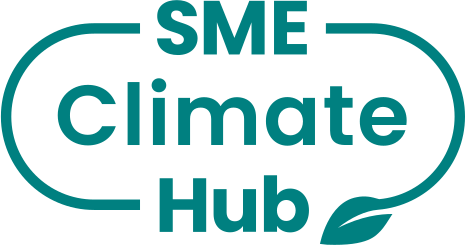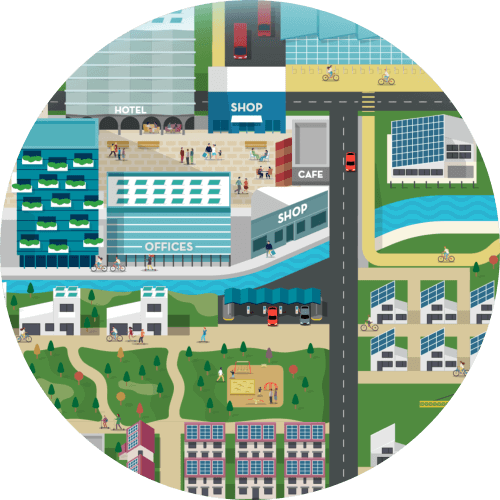اطلع على الخطوات التي يمكن لشركتك اتخاذها نحو مستقبل أكثر استدامة من خلال مواردنا المفتوحة.
Radnor Hills Mineral Water Co Ltd's Climate Report
Introduction *
Commitment and Targets *
Own Emissions *
Value Chain Emissions *
(optional)Climate Solutions *
(optional)Management, Strategy and Climate Risk *
(optional)Results, Challenges and Outlook *
Introduction *
1.1 Reporting year
*2022
1.1.1 Reporting period
*from 6.2022 to 5.2023
1.2 Describe your business activities
*1.4 Number of employees in the reporting year
*1.4.1 Full-time equivalent (FTE) or headcounts
*1.5 Let us know if your company is a parent company or subsidiary
*Commitment and Targets *
2.1 Net zero target year
*2.1.1 Base year
*2.2 Near-term target
*50% of intensity scope 1+2 emission reduction from my base year by 2022
2.3 Provide any additional comments or context on your net zero and near term targets.
*Own Emissions *
3.1 To reduce emissions in line with my commitment, my company has a plan and is taking action
*Energy consumption
3.2 Total energy consumption
*3.3 Renewable energy
*Scope 1 emissions
3.4 Scope 1 emissions
*Scope 2 emissions
3.5 Location based scope 2 emissions
*3.6 Market based scope 2 emissions
*3.7 Describe your plans and actions taken to reduce scope 1 & 2 emissions.
*3.8 Describe the calculation methodology and comment on the data accuracy, including any tools/methods used to calculate.
*Value Chain Emissions (optional) *
Scope 3 emissions
4.1 Have you measured any of your scope 3 emissions?
*4.1.1 Total scope 3 emissions
*Supply chain related - upstream emissions
Customer related - downstream emissions
4.1.17 Do you have a plan and are taking action to reduce emissions from your value chain?
*Yes
4.2 Have you asked any of your suppliers to set a net zero target (either voluntarily or as a requirement)?
*4.3 Have you communicated your commitment and actions to any of your customers?
*4.4 Describe the calculation methodology and comment on the data accuracy and any tools used to calculate your scope 3 emissions.
*Climate Solutions (optional) *
5.1 Do you classify any of your existing goods and/or services as a climate solution?
*Management, Strategy and Climate Risk (optional) *
6.1 What governance processes do you have in place for your climate strategy? Choose as many as are applicable.
*Other (please specify)
6.1 Explain
*6.2 Have you started to identify and assess your companies climate risks and opportunities?
*6.2.1 Where are the climate risks you've identified?
*6.2.2 How are you managing these climate risks? Choose as many as are applicable.
*We\'ve started to prioritise climate risks,We\'ve mapped the impact of our climate risks over time (short, medium and long term horizons),We\'ve assessed these risks against revenue of the company,We\'ve Identified plans for adaptation to mitigate these risks
6.3 Have you integrated climate and/or nature into your company mission statement or shareholder agreements? If yes, describe how.
*No
6.4 Have you taken actions this year outside of your emissions to accelerate climate progress?
*Yes
Results, Challenges and Outlook *
7.1 Provide any additional comments or context on your annual results and progress from previous years.
*7.2 Do you face any key challenges in reducing emissions?
*Reducing scope 1 emissions,Reducing scope 3 emissions,Balancing emission reductions with business growth,Complexities in managing supply chain emissions,Slow societal and economic progress on climate action,Insufficient policies or government incentives,Time constraints,Lack of skills and knowledge,Inaccurate or insufficient data
7.3 Has there been any third party validation of the data submitted in this report?
*Yes

Radnor Hills Mineral Water Co Ltd's Climate Report
Radnor Hills Mineral Water Co Ltd's Climate Report - 2022
Introduction *
1.1 Reporting year
*2022
1.1.1 Reporting period
*from 6.2022 to 5.2023
1.2 Describe your business activities
*1.4 Number of employees in the reporting year
*1.4.1 Full-time equivalent (FTE) or headcounts
*1.5 Let us know if your company is a parent company or subsidiary
*Commitment and Targets *
2.1 Net zero target year
*2.1.1 Base year
*2.2 Near-term target
*50% of intensity scope 1+2 emission reduction from my base year by 2022
2.3 Provide any additional comments or context on your net zero and near term targets.
*Own Emissions *
3.1 To reduce emissions in line with my commitment, my company has a plan and is taking action
*Energy consumption
3.2 Total energy consumption
*3.3 Renewable energy
*Scope 1 emissions
3.4 Scope 1 emissions
*Scope 2 emissions
3.5 Location based scope 2 emissions
*3.6 Market based scope 2 emissions
*3.7 Describe your plans and actions taken to reduce scope 1 & 2 emissions.
*3.8 Describe the calculation methodology and comment on the data accuracy, including any tools/methods used to calculate.
*Value Chain Emissions (optional) *
Scope 3 emissions
4.1 Have you measured any of your scope 3 emissions?
*4.1.1 Total scope 3 emissions
*Supply chain related - upstream emissions
Customer related - downstream emissions
4.1.17 Do you have a plan and are taking action to reduce emissions from your value chain?
*Yes
4.2 Have you asked any of your suppliers to set a net zero target (either voluntarily or as a requirement)?
*4.3 Have you communicated your commitment and actions to any of your customers?
*4.4 Describe the calculation methodology and comment on the data accuracy and any tools used to calculate your scope 3 emissions.
*Climate Solutions (optional) *
5.1 Do you classify any of your existing goods and/or services as a climate solution?
*Management, Strategy and Climate Risk (optional) *
6.1 What governance processes do you have in place for your climate strategy? Choose as many as are applicable.
*Other (please specify)
6.1 Explain
*6.2 Have you started to identify and assess your companies climate risks and opportunities?
*6.2.1 Where are the climate risks you've identified?
*6.2.2 How are you managing these climate risks? Choose as many as are applicable.
*We\'ve started to prioritise climate risks,We\'ve mapped the impact of our climate risks over time (short, medium and long term horizons),We\'ve assessed these risks against revenue of the company,We\'ve Identified plans for adaptation to mitigate these risks
6.3 Have you integrated climate and/or nature into your company mission statement or shareholder agreements? If yes, describe how.
*No
6.4 Have you taken actions this year outside of your emissions to accelerate climate progress?
*Yes
Results, Challenges and Outlook *
7.1 Provide any additional comments or context on your annual results and progress from previous years.
*7.2 Do you face any key challenges in reducing emissions?
*Reducing scope 1 emissions,Reducing scope 3 emissions,Balancing emission reductions with business growth,Complexities in managing supply chain emissions,Slow societal and economic progress on climate action,Insufficient policies or government incentives,Time constraints,Lack of skills and knowledge,Inaccurate or insufficient data
7.3 Has there been any third party validation of the data submitted in this report?
*Yes
Not sure how to start?
See the steps you can take and get help building a plan to cut your business emissions today.
¿No estás seguro de por dónde empezar?
Revisa los pasos que puedes dar y obtén ayuda para elaborar un plan para reducir las emisiones de tu empresa hoy mismo.
لست متأكداً كيف تبدأ؟
اطلع على الخطوات التي يمكنك اتخاذها واحصل على المساعدة في وضع خطة لخفض انبعاثات شركتك اليوم.
Vous ne savez pas par où commencer ?
Découvrez les mesures que vous pouvez prendre et obtenez de l’aide pour élaborer un plan pour réduire les émissions de votre entreprise dès aujourd’hui.
Ready to commit to lower emissions?
It’s easy to make the commitment. Just complete a form sharing your intent to reduce your emissions.
You’ll earn public recognition for taking the first step.
¿Listo para comprometerte a reducir tus emisiones?
Es fácil comprometerse. Solo tienes que completar un formulario compartiendo tu intención de reducir tus emisiones.
Ganarás reconocimiento público por tomar este primer paso.
هل أنت مستعد للالتزام بتقليل الانبعاثات؟
الالتزام سهل. ما عليك سوى تعبئة نموذج لمشاركة عزمك على تقليل انبعاثاتك.
سوف تحظى باعتراف عام باتخاذك الخطوة الأولى.
Prêt à vous engager pour réduire les émissions ?
S’engager est simple. Il suffit de remplir un formulaire indiquant votre intention de réduire vos émissions.
Vous gagnerez une reconnaissance publique pour avoir fait le premier pas.
Register now to use our tools
Register now to use our tools

ابقَ على اطلاع!
اشترك في نشرتنا الإخبارية للبقاء على اطلاع بأحدث التطورات المناخية.
تسجيل الدخول
Don't have an account? Create account to access our tools or make the SME Climate Commitment
تسجيل الدخول
Don't have an account? Create account to access our tools or make the SME Climate Commitment
تسجيل الدخول
Don't have an account? Create account to access our tools or make the SME Climate Commitment
هل نسيت كلمة المرور؟
Please enter your email address. You will receive a link to create a new password via email.

 Go back
Go back

